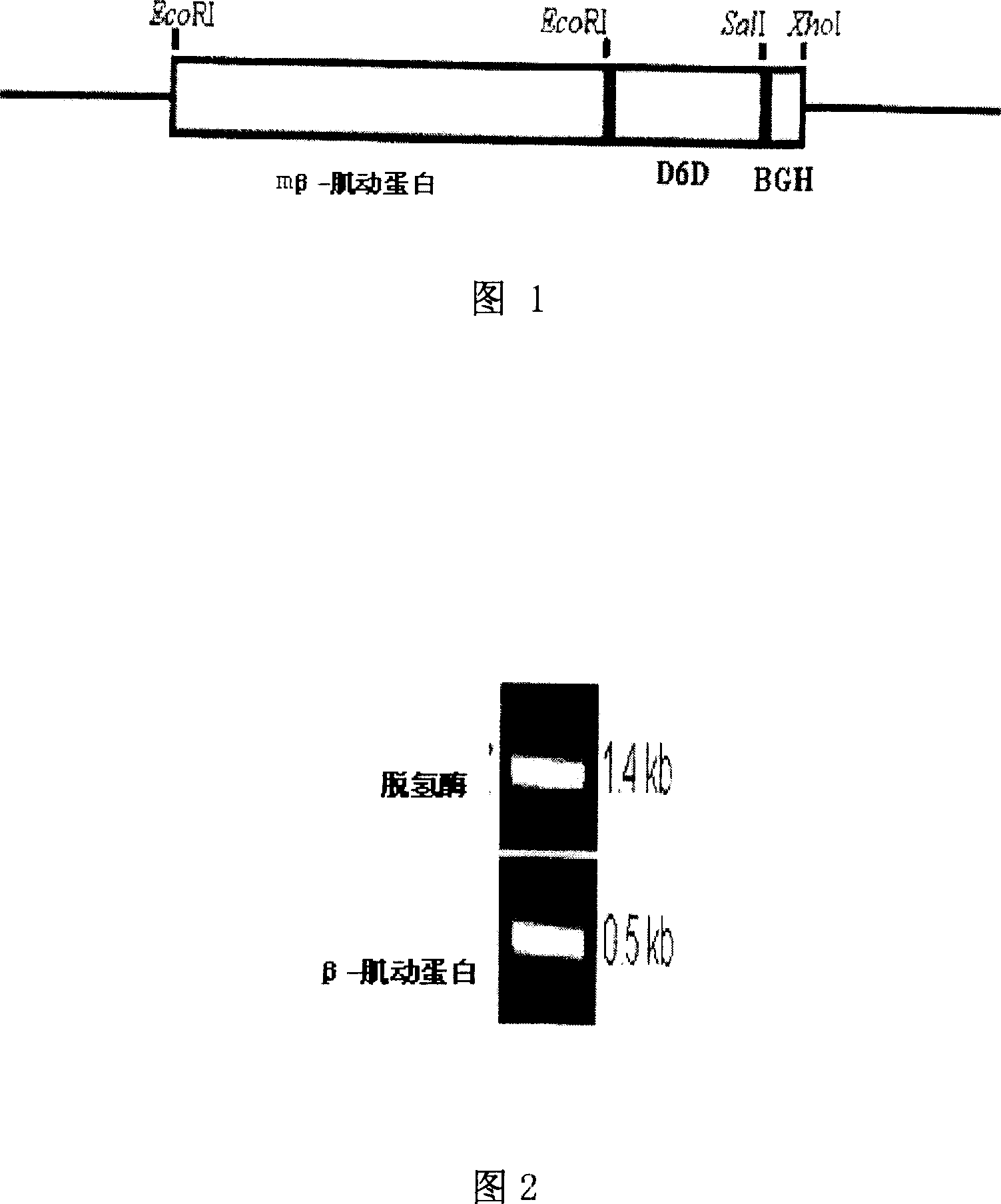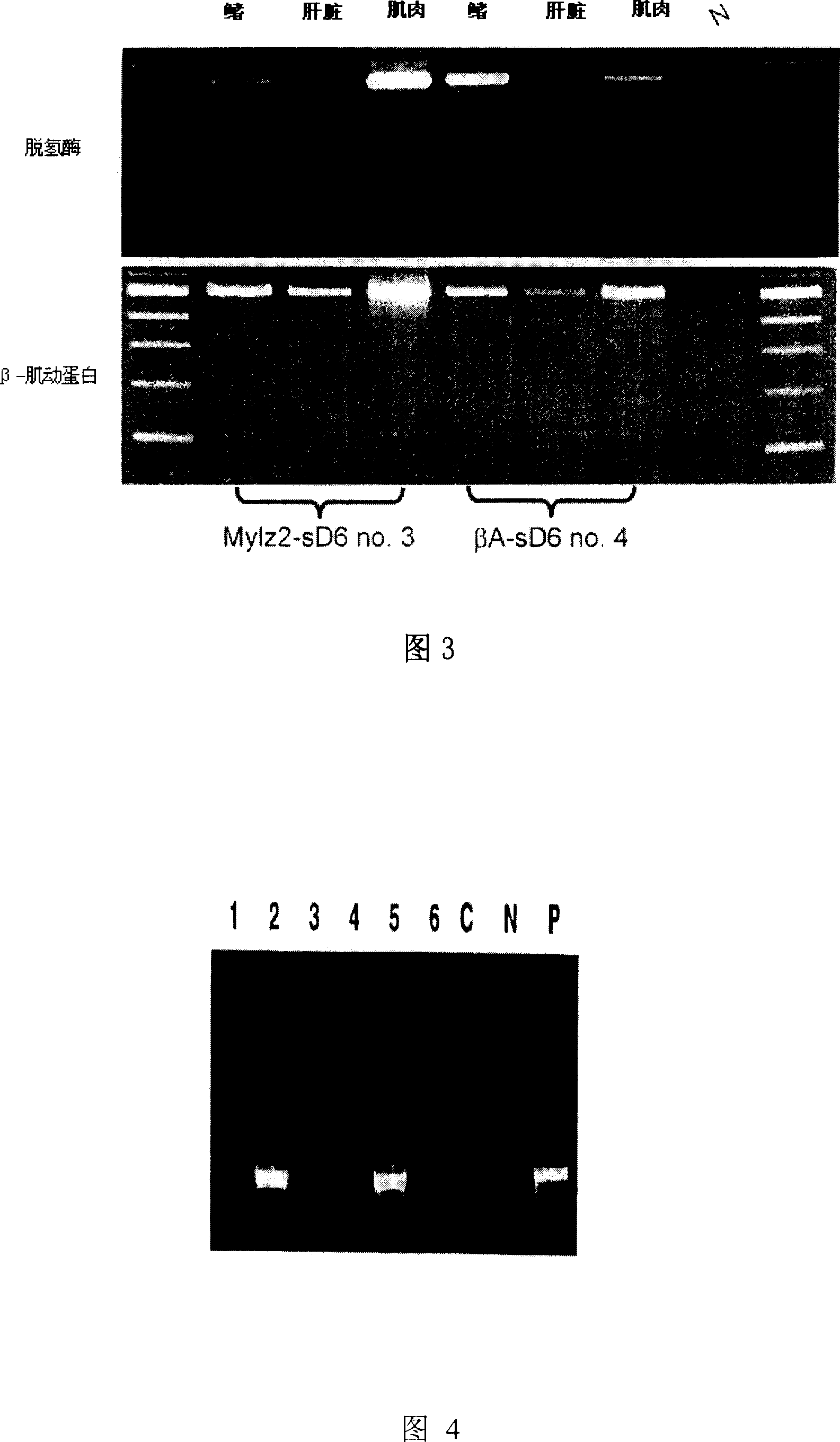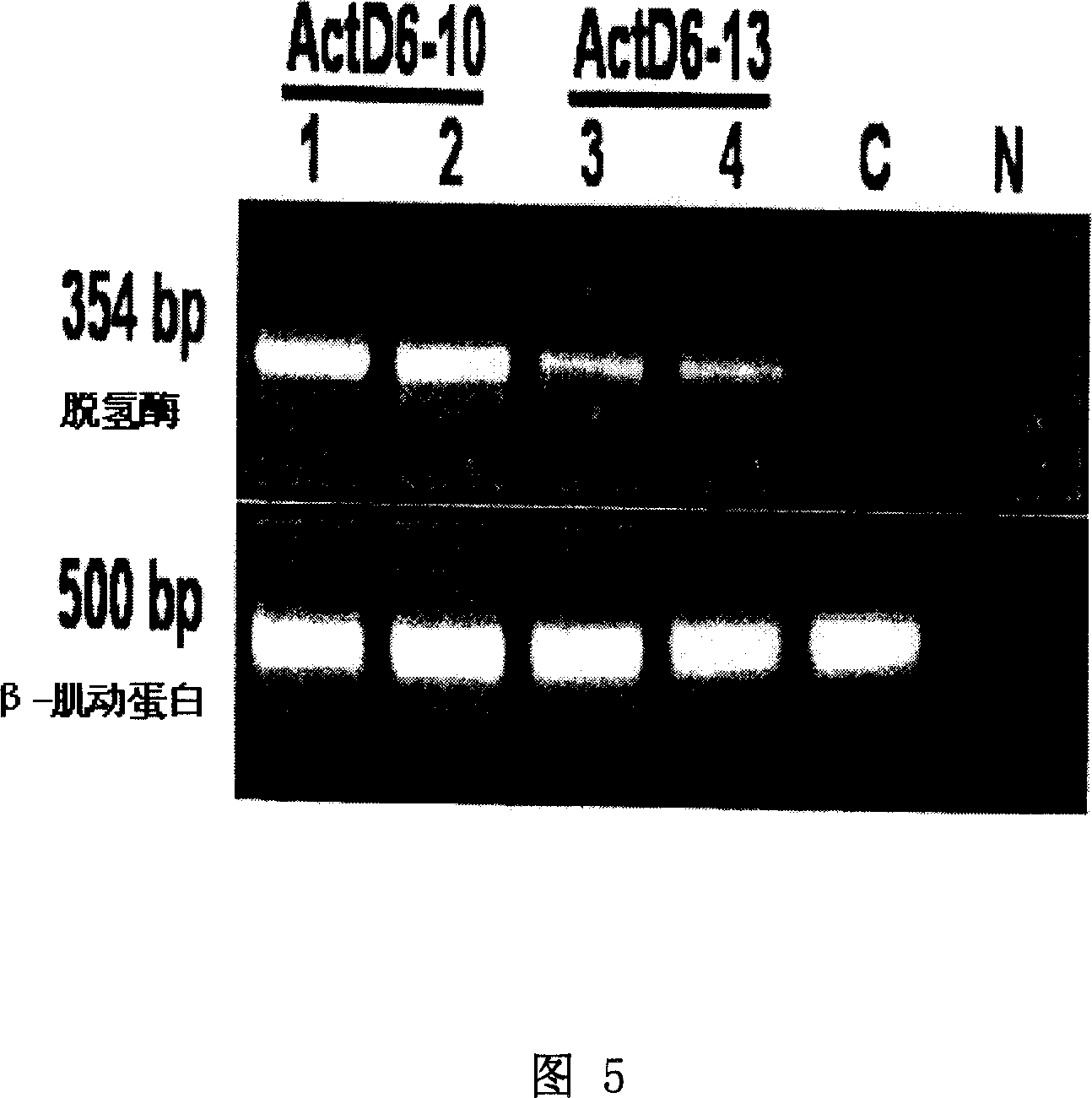Transgenic fish with increased unsaturated fatty acid content
A fatty acid and genetically modified technology, applied in genetic engineering, plant genetic improvement, botany equipment and methods, etc., can solve the problems of no observed vitamin C production, no direct evidence, etc., and achieve high vitality and high contribution Effect
- Summary
- Abstract
- Description
- Claims
- Application Information
AI Technical Summary
Problems solved by technology
Method used
Image
Examples
Embodiment 1
[0091] Example 1: Breeding and food for zebrafish
[0092] Using zebrafish of the AB strain (walker et al., 1999), with several amendments to the abstract of Westerfield (1995), the fish were spawned and reared. Parent fish (broodstock) were reared at 28±1° C. in a 40 liter tank under a photoperiod of 14 hours light and 10 hours dark. The fish were fed with otohime (trade name: manufactured by Nisshin Corporation) and Artemia (manufactured by Salt Creek Corporation) nauplii every other day, respectively. In order to perform microinjection twice a day, 12 females and 8 males were placed in 4 water tanks. Divide these tanks into two groups so that one group spawns at 10:30am and the other at 14:00pm.
Embodiment 2
[0093] Example 2: Cloning of Δ6 desaturase cDNA
[0094] [Delta]6 desaturase-like cDNA was isolated from the liver of Masu salmon (Oncorhynchus masou) by PCR using two denatured primers based on the GenBank database (AB070444). These two denatured primers, forward and reverse are (5'-TACTCCATGGTTCAGCAAATGAATTGAACA-3') and (5'-TCGTCCATGGCCATTCACTGCTGACAAGGA-3') respectively. In order to facilitate the cloning of expression vectors, the two-day primers each contain an NcoI site ( offline part). PCR amplification was performed under the following conditions. 3 minutes at 94°C, followed by 30 cycles of 30 seconds at 94°C, 30 seconds at 62°C, 1.5 minutes at 72°C. Then, the PCR amplification product of 1680 bp was subcloned into pGEM-TEasy vector (manufactured by Promega).
Embodiment 3
[0095] Embodiment 3: Construction of introducing gene expression
[0096]The 8.5 kb plasmid pArD6 (Fig. 1) was used for gene expression. That is, pRc / RSV (manufactured by Invitrogen) was treated with XhoI, and the extracted bovine growth hormone (BGH poly(A)) sequence was ligated to pBluescriptSK(+ / -) (manufactured by Clontech). The 3.7 kb medaka β-actin promoter (mβ-actin) (Takagi et al., 1994) was modified by PCR with pOBA-109, provided for the expression of pBluescriptSK containing BGH poly(A) ( + / -) linked EcoRI sites. The Δ6 desaturase-like gene (D6D) of the 1477kb masu salmon (O.masou) obtained in embodiment 2, as two oligonucleotide primers based on the GenBank database (AB070444), use the SalI recognition site containing Forward primer SalI-desF3 (5'-TTGTCGACGGTCTGAGTGGAGCAGAGAGAA-3'; sequence number 5) and reverse primer-des-OmaR (5'-ATCCAGGAAATGTCCTCTCTGTTCGCA-3' (sequence number 6) of point (underline part), at 94 3 minutes at 94°C, 30 seconds at 94°C, 30 seconds...
PUM
 Login to View More
Login to View More Abstract
Description
Claims
Application Information
 Login to View More
Login to View More - R&D
- Intellectual Property
- Life Sciences
- Materials
- Tech Scout
- Unparalleled Data Quality
- Higher Quality Content
- 60% Fewer Hallucinations
Browse by: Latest US Patents, China's latest patents, Technical Efficacy Thesaurus, Application Domain, Technology Topic, Popular Technical Reports.
© 2025 PatSnap. All rights reserved.Legal|Privacy policy|Modern Slavery Act Transparency Statement|Sitemap|About US| Contact US: help@patsnap.com



